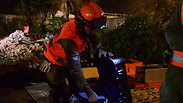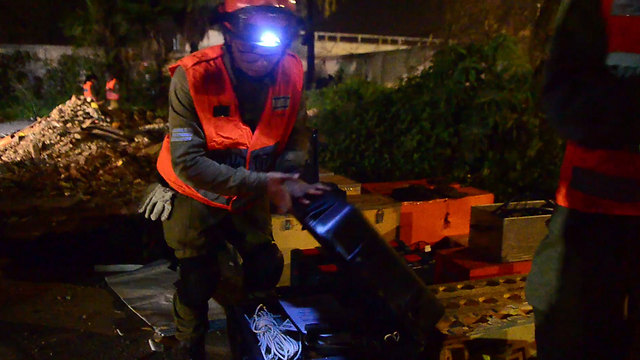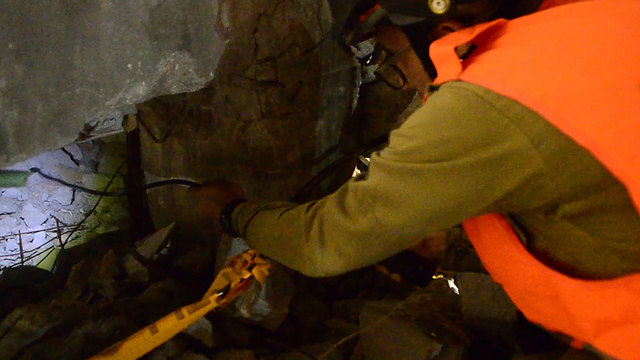

Watch: IDF's new 'worm' camera
The Home Front Command is in the first stages of implementing a new 'worm' camera expected to quadruple search-and-rescue efficiency in urban disaster zones. Lt. Col. Elad Edri, the first to try the new camera, says that it will make the difference between life and death.
IDF's new "worm" camera was field tested last week by the Home Front Command during a location and evacuation military exercise in the city of Lod.
The camera's introduction to search-and-rescue teams is expected to shave 70% of the time it takes to locate and evacuate stranded survivors in an urban disaster zone.
The camera's lens is small and is attached with a powerful LED lamp. It is attached to a flexible worm-like pole and thus can slither into tiny crevasses and air pockets in collapsed structures where survivors could be stranded.
Security forces so far used a similar camera called "SearchCam", though it has a telescopic pole and cost about $10,000 per unit.
The new camera, like the previous one, transmit what it is recording in real time, but at a much higher resolution and is estimated to cost only a third of SearchCam.
Because of its affordable price, rescue units will now receive 3-4 cameras instead of one, which will quadruple the area covered by them at any given time.
"This is cutting-edge technology when it comes to search cameras," said the commander of the search-and-rescue battalion "Kedem", Lt. Col. Elad Edri, who was the first to try the new camera.
"You can bend the camera's pole and thread it between two floors that collapsed on top of each other," said the battalion commander, summarizing, "In the exercise we simulated a scenario with 60 stranded people, and we succeeded in mapping their location in the area within half an hour instead of two. In a large site it would have meant the difference between life and death."
According to Edri, the use of the cameras was ultimately what made the difference.
The new camera is only the last in a list of technological innovations introduced in recent years to search and rescue teams, from a drone that is now in the position of every Home Front Command battalion and a compact suit-case LED lighting system to new small and light-weight drilling and cutting tools.
(Translated & edited by Lior Mor)

















